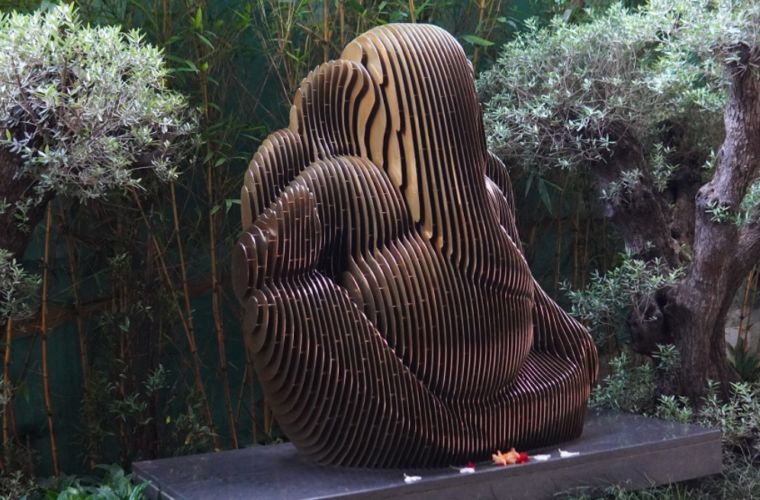Bavilion, Studio Ardete
Lead architects: Ar. Badrinath Kaleru and Ar. Prerna Kaleru
The Doaba Public School is located in a remote village of Parowal, in Punjab. The school has over 2500 students from over 100 villages in the vicinity, and school buses are the primary mode of transport as families are scattered away from each other – the farthest being 50 kilometers away.
A 20-year-old school bus that surpassed its permitted lifetime as a vehicle was to undergo mandatory disposal. The bus was special to the school as it belonged to the first fleet of buses, which now has over fifty buses. Therefore, the client wanted to reuse the bus so that it was once more useful to the school.
A pavilion is designed to utilize the bus’ outer structure and a triangular prismatic volume, and the two volumes are intersected and juxtaposed to make the space useful and interactive. The roof is converted into a deck that is accessible by a staircase and opens into a small open-air theater. It is inspired by the curiosity of children and adults, and how they like to stand on top of a bus. Despite the limited space, people enjoy the spectacular field views from the deck.
The inside is utilized as a display that documents the school’s journey of four decades and is designed with multifaceted white panels oriented in line with the field vision of children and adults alike. The bus’s original key elements such as the steering wheel and driver’s seat are retained to let the children interact with the same, and the external open-air theater and deck are designed to host formal and informal events.
The structure is used as a breakout space and congregation space for teachers and students, and parents and visitors reminisce about their roots. Traditional villages have always believed in the circular economy but now try to imitate cities due to their aspirational value – while converting them into wasteful linear economies. The up-cycle ‘bus-building’ helps reinforce their trust in a traditional circular economy.
After serving more than 8000 school trips, the bus finally rests as an integral part of the school. It becomes a play area, an open-air theater, and a gallery that reiterates the importance of reuse and up-cycling in the students towards a sustainable future.









